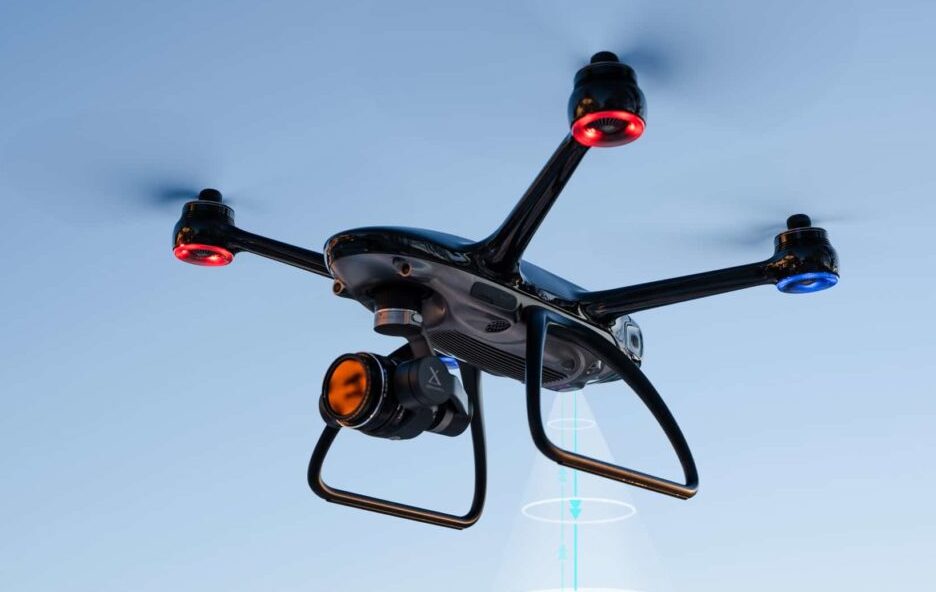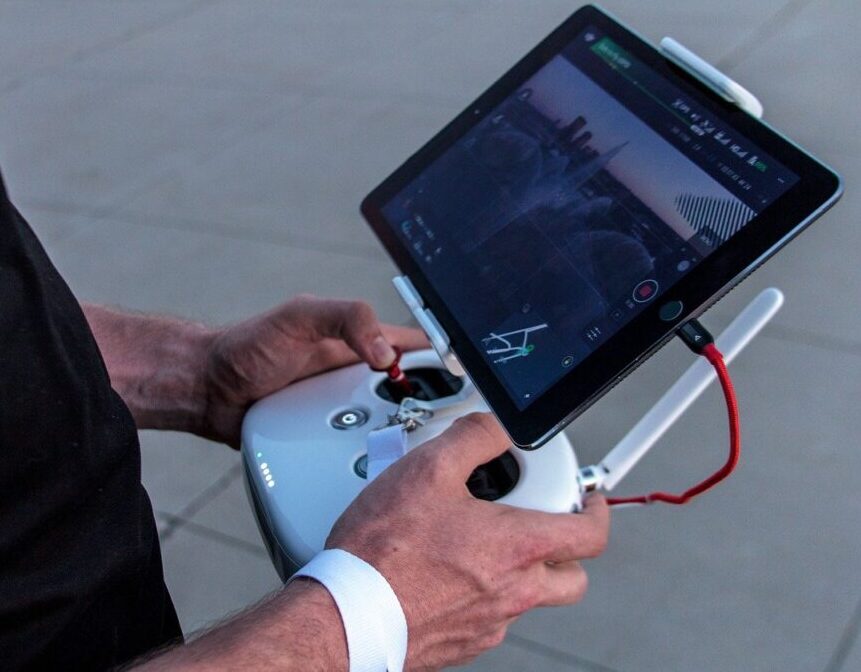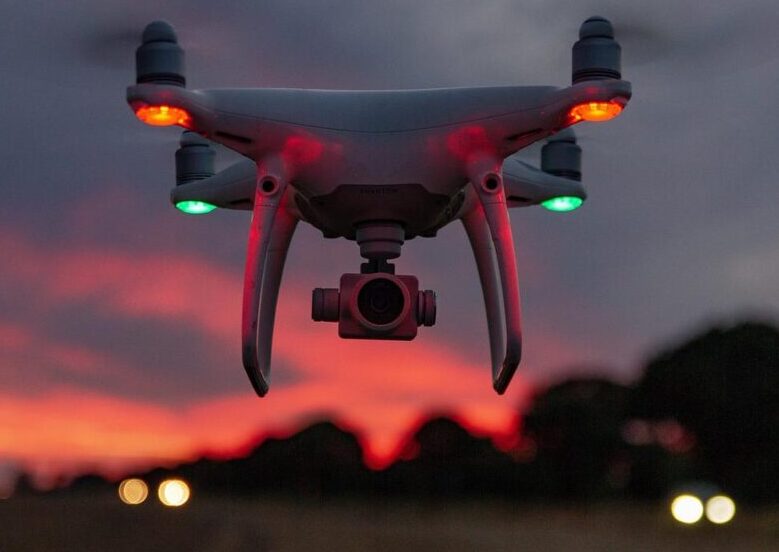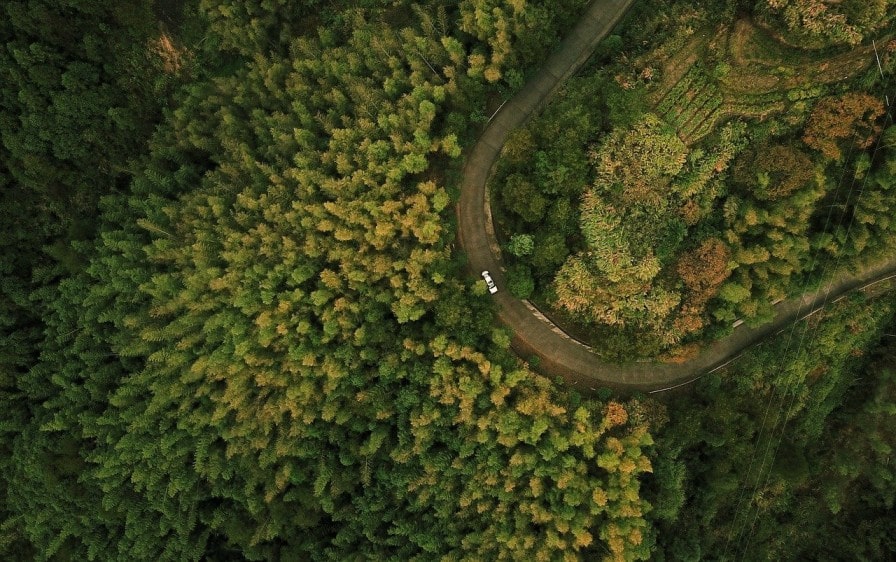How far can drones go?
Welcome, fellow drone enthusiasts! In this article, we’ll be discussing a fundamental term in the world of drones – drone range- and exploring its significance.
When we talk about drone range, we are referring to the maximum distance your drone can fly away from you before losing its connection. Essentially, it’s like a leash that keeps your drone within your control. But why does drone range matter?
Define drone range and its significance
Well, for starters, a good drone range allows you to explore vast areas and capture stunning aerial footage or photos. You’ll have the freedom to soar high above breathtaking landscapes and capture footage that was once only possible by renting a helicopter or climbing a mountain.
Moreover, having a reliable drone range gives you the freedom to navigate obstacles and maneuver your drone efficiently. Whether you’re flying in a dense forest to capture rare wildlife or scouting a construction site, having a longer range means you can easily pilot your drone without worrying about it losing connection and crashing into something unexpected.
But, how can you expand the range of your drone? There are several methods to extend your drone’s reach. One of them is upgrading your drone’s antennas. By replacing the default antennas with high-gain ones, you can significantly boost your drone’s signal strength and range. Additionally, using a signal booster can amplify the signal from your controller, allowing you to reach greater distances.
However, it’s essential to remember that while a longer drone range opens up new possibilities, you should always fly within the limits of your local laws and regulations. Safety should be your top priority, and flying responsibly ensures that the drone community continues to thrive.
So there you have it – the significance of drone range and why it matters. Whether you’re a hobbyist or a professional, understanding drone range is essential when it comes to maximizing your drone’s capabilities. Stay tuned for more drone-related insights and information!
Factors affecting drone range

Ah, the factors that can make or break our drone’s range – let’s dive right in!
When it comes to the range of your trusty drone, there are several key factors that come into play. Understanding these factors is crucial for maximizing your drone’s capabilities and ensuring smooth and safe flights. So, let’s explore the main factors that can affect your drone’s range:
- Battery Life:
Ah, the life force of your drone – the battery! The duration your drone can stay in the air is directly linked to its battery life. A fully charged battery can give your drone the power it needs to fly longer distances. So, keeping your battery in top shape and charging it before each flight is essential to ensure a decent drone range. - Altitude:
Take your drone to new heights, quite literally! The altitude at which you fly your drone can have a significant impact on its range. When you fly higher, you encounter less air resistance and can cover more ground. Just keep in mind that flying at higher altitudes may also affect other factors like wind conditions, so it’s crucial to maintain control and monitor your drone closely. - Weather Conditions:
Oh, the unpredictable nature of Mother Nature! Weather conditions can heavily influence your drone’s range. Strong winds, rain, snow, or extreme temperatures can make it challenging for your drone to maintain stability and stay connected. It’s always wise to check the weather forecast before takeoff to ensure safe flying conditions and preserve your drone’s range. - Obstructions:
Watch out for those pesky obstacles! Trees, buildings, or even other drones in the vicinity can interfere with your drone’s signal and reduce its range. Flying in open spaces with minimal obstructions is ideal for maximizing both signal strength and range. It’s also important to note that certain radio frequencies used for drone control may be affected by buildings or other structures, so be aware of your surroundings. - Drone Size and Weight:
Size does matter, at least when it comes to drones! The size and weight of your drone can impact its range of capabilities. Smaller and lighter drones may have a shorter range compared to larger ones due to limitations in battery power and signal strength. So, if a longer range is a priority for you, consider opting for a drone with better range capabilities.
Now that we’ve identified these factors, you can see why they play such a crucial role in determining your drone’s range. By understanding and managing these factors, you’ll be able to push the boundaries of your drone’s flight capabilities and explore new horizons.
Types of drones and their maximum range
Absolutely! Let’s explore the different types of drones and their maximum ranges:
A. Long-Range Drones:
Long-range drones are designed specifically for extended flights and covering vast distances. These drones often have advanced technology, larger batteries, and more powerful motors to ensure they can fly long distances. As a result, their maximum range can range from several kilometers to even tens of kilometers, depending on the specific model and its capabilities. Long-range drones are often used for professional aerial photography, videography, search and rescue missions, or industrial inspections in remote areas.
B. Recreational Drones:
Recreational drones, also known as consumer drones, are designed for hobbyists and casual drone enthusiasts. These drones typically have shorter ranges compared to long-range drones due to their smaller size, limited battery capacity, and lower power. The maximum range of recreational drones can vary, but it typically ranges from a few hundred meters up to a couple of kilometers. It’s important to note that recreational drone pilots are usually required to keep their drones within visual line of sight and follow local regulations regarding drone operation.
C. Commercial Drones:
Commercial drones are used in various industries and applications, from photography and videography to agriculture, construction, and surveying. The maximum range of commercial drones can vary depending on the purpose and the specific model chosen. Some commercial drones are built for shorter-range operations, while others are designed for longer distances. The range can range from a few hundred meters to several kilometers, depending on the specific drone model, signal strength, and battery capabilities. Commercial drone pilots are also subject to regulations and may require specific certifications or permits depending on the jurisdiction and application.
It’s important to note that the maximum range advertised by drone manufacturers may not always be achievable in real-world conditions due to factors like signal interference, weather conditions, and battery limitations. Additionally, it’s crucial for drone pilots to operate within legal boundaries and maintain line of sight with their drones, regardless of the drone’s range capabilities.
Precautions to take before flying your drone
Absolutely! Before taking to the skies with your drone, it’s essential to take some important precautions. Let’s explore them in detail:
A. Check Your Drone’s Range:
One of the first and most crucial precautions you should take is to familiarize yourself with your drone’s range limitations. Every drone has a maximum range specified by the manufacturer, and it’s important to understand this range to avoid flying your drone beyond its capabilities. By knowing the range, you can plan your flights accordingly, ensuring a safe and controlled experience. Remember, pushing your drone to its maximum range can increase the risk of losing control or losing signal connection, so it’s wise to stay within a comfortable distance.
B. Plan Your Flight:
Planning your flight is a key part of ensuring a successful and safe drone operation. Here are some important factors to consider when planning your drone flight:
- Restricted Areas: Check for any local restrictions or no-fly zones in your area. Some locations, such as airports, military installations, or national parks, may prohibit drone flying or have specific regulations in place.
- Flight Path: Plan your flight path in advance, taking into account the intended area of exploration, potential obstacles, and any areas of interest. Having a clear plan will help you navigate the flight smoothly and make the most of your drone’s range.
- Time of Day: Consider the time of day when planning your flight. The lighting conditions can make a significant difference in the quality of your aerial footage or images. Additionally, be mindful of sunrise and sunset times as they may affect visibility and flight regulations.
C. Check the Weather:
Before launching your drone, always check the weather conditions. Here are some weather-related precautions to consider:
- Wind: Strong winds can greatly affect your drone’s stability and range. High wind speeds can make it challenging to control the drone and can even cause it to drift off course. Be aware of the wind conditions and avoid flying on excessively windy days.
- Rain and Storms: Flying your drone in rainy or stormy weather is not advisable. Water can damage the drone’s electronics and obstruct its propellers, leading to potential accidents. Always wait for clear and dry weather conditions for safe flights.
- Temperature: Extreme temperatures, both hot and cold, can impact your drone’s flight performance and battery life. Ensure that your drone’s battery is suitable for the temperature range you’ll be flying in and monitor its temperature during the flight.
By thoroughly checking your drone’s range, planning your flight in advance, and keeping an eye on the weather conditions, you’ll significantly reduce the risks and maximize the enjoyment of your drone flying experience.
Precautions to take before flying your drone

Absolutely! Before taking to the skies with your drone, it’s essential to take some important precautions. Let’s explore them in detail:
A. Check Your Drone’s Range:
One of the first and most crucial precautions you should take is to familiarize yourself with your drone’s range limitations. Every drone has a maximum range specified by the manufacturer, and it’s important to understand this range to avoid flying your drone beyond its capabilities. By knowing the range, you can plan your flights accordingly, ensuring a safe and controlled experience. Remember, pushing your drone to its maximum range can increase the risk of losing control or losing signal connection, so it’s wise to stay within a comfortable distance.
B. Plan Your Flight:
Planning your flight is a key part of ensuring a successful and safe drone operation. Here are some essential factors to consider when planning your drone flight:
- Restricted Areas: Check for any local restrictions or no-fly zones in your area. Some locations, such as airports, military installations, or national parks, may prohibit drone flying or have specific regulations in place.
- Flight Path: Plan your flight path in advance, taking into account the intended area of exploration, potential obstacles, and any areas of interest. Having a clear plan will help you navigate the flight smoothly and make the most of your drone’s range.
- Time of Day: Consider the time of day when planning your flight. The lighting conditions can make a significant difference in the quality of your aerial footage or images. Additionally, be mindful of sunrise and sunset times as they may affect visibility and flight regulations.
C. Check the Weather:
Before launching your drone, always check the weather conditions. Here are some weather-related precautions to consider:
- Wind: Strong winds can greatly affect your drone’s stability and range. High wind speeds can make it challenging to control the drone and can even cause it to drift off course. Be aware of the wind conditions and avoid flying on excessively windy days.
- Rain and Storms: Flying your drone in rainy or stormy weather is not advisable. Water can damage the drone’s electronics and obstruct its propellers, leading to potential accidents. Always wait for clear and dry weather conditions for safe flights.
- Temperature: Extreme temperatures, both hot and cold, can impact your drone’s flight performance and battery life. Ensure that your drone’s battery is suitable for the temperature range you’ll be flying in and monitor its temperature during the flight.
By thoroughly checking your drone’s range, planning your flight in advance, and keeping an eye on the weather conditions, you’ll significantly reduce the risks and maximize the enjoyment of your drone flying experience.
Remember, safety is paramount in drone operation, and adhering to local regulations and guidelines is crucial to ensure a responsible and lawful flight. So, go ahead and take these precautions, and enjoy the thrills and wonders of drone flight!
What Happens When the Drone Leaves its Range?
When a drone leaves its range, there are a few possible outcomes depending on the drone’s capabilities and settings. In most cases, if the drone is equipped with GPS technology, it is designed to automatically return to its home position when it goes out of range1.
The return-to-home feature is a failsafe mechanism that ensures the drone comes back to a designated home point, typically where it was launched from. This feature is especially common in GPS-enabled drones, such as those from DJI2.
Additionally, when the video transmission between the drone and the controller is lost due to being out of range, the video feed on the controller’s screen may go blank. However, once the drone comes back into range, the video transmission will resume, and the controller will regain control over the drone1.
It is important to note that these outcomes may vary depending on the specific drone model, its settings, and the presence of any additional flight modes or features. It’s recommended to consult the drone’s user manual or manufacturer’s specifications for more detailed information on what happens when the drone leaves its range.
What Decides the Range Of A Drone?

What decides the range of a drone? Ah, an intriguing question that delves into the inner workings of our beloved flying machines. Let’s get right into the nitty-gritty, my fellow drone enthusiasts.
The range of a drone is determined by several factors, each playing a significant role in how far your drone can soar. So, grab your notepads, and let’s dive in:
- Radio Frequency (RF) Technology: Drones communicate with their remote controllers using RF technology. The range of a drone is often limited by the strength and reach of this RF signal. Factors such as frequency band, signal power, and regulatory restrictions can impact the drone’s effective range. Understanding the capabilities of the RF technology used by your drone is key to unlocking its maximum range potential.
- Antenna Performance: The antennas on both the drone and the remote controller directly influence the range. Higher quality and more efficient antennas can improve signal transmission and reception, enabling your drone to fly further. Upgrading to high-gain antennas can boost your drone’s range and reduce signal interference, maximizing your flying experience.
- Environmental Factors: The environment in which you fly your drone plays a significant role in its range. Interference from obstacles like buildings, trees, and other objects can weaken the signal and limit the drone’s range. For an extended range, choose open areas with minimal obstructions to provide a clear path for the drone’s signal to travel.
- Drone Design and Power: The design and power of the drone itself can impact its range. Drones with larger batteries and more efficient motors tend to have longer flight times and greater range capabilities. Lightweight and aerodynamic designs can also contribute to increased range by reducing drag and maximizing battery efficiency.
- Regulatory Restrictions: Local regulations and airspace restrictions can dictate the maximum range for drone flights in certain areas. It’s essential to familiarize yourself with these regulations and fly within the permitted limits to ensure a safe and legal flight.
Regulatory Restrictions: Local regulations and airspace restrictions can dictate the maximum range for drone flights in certain areas. It’s essential to familiarize yourself with these regulations and fly within the permitted limits to ensure a safe and legal flight.


